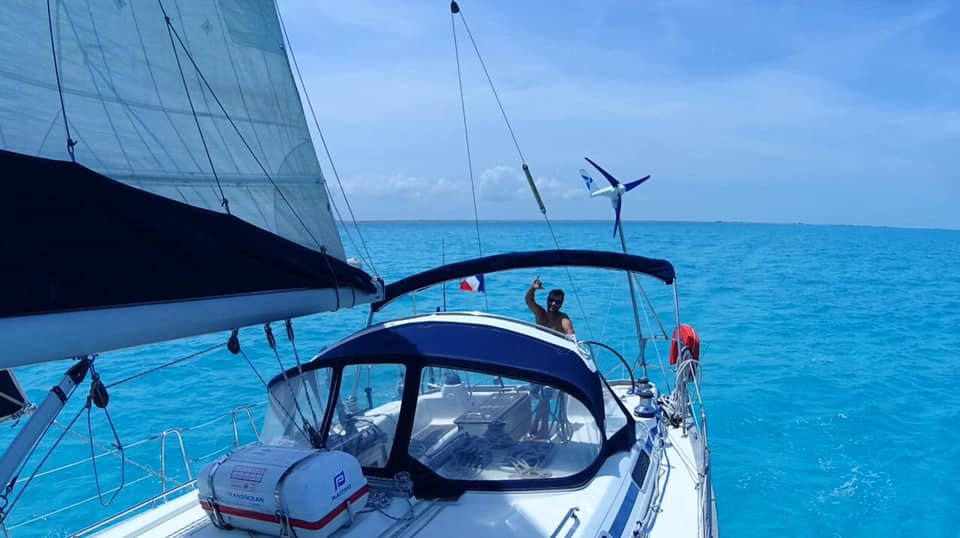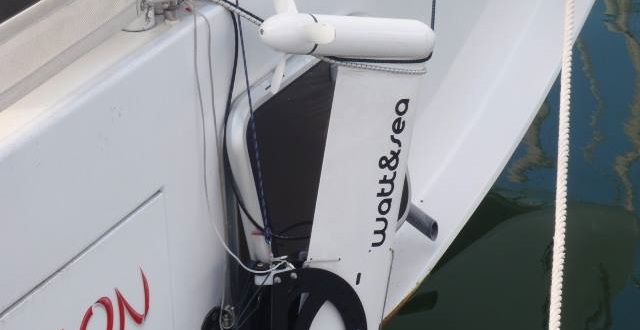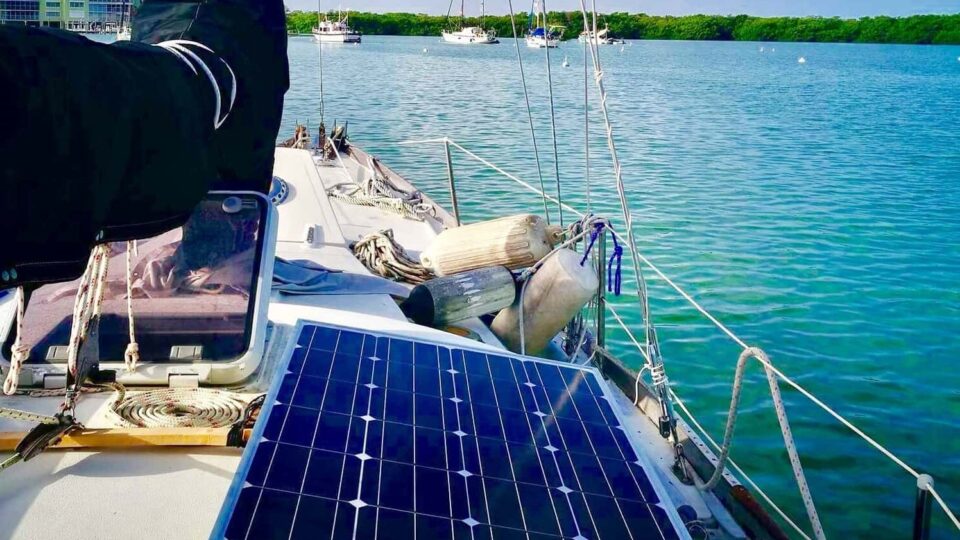How to Charge a Sailboat Battery
A reliable supply of battery power is essential in order to keep smoothly running your sailboat’s vital systems when you are on the water. All the power that makes the sailboat’s devices, equipment, and systems functioning comes from the domestic battery bank. But do you know how to manage your boat battery bank? And, what are the different charging systems for a sailboat battery? In this article, we’re going to explain some details about sailboats batteries in order to help you gauge their normal daily performance. Like this, it will be much easier for you to troubleshoot and identify any possible problems.
General Info for Sailboat Batteries
In order for the whole system to function safely, there are certain elements that need to be taken care of. These are storage, supply, and requirement. The balance of these elements is essential for any sailboat. For example, if there’s not enough storage capacity or insufficient battery amperage, then you’ll need to recharge the batteries more frequently. However, if the charging equipment doesn’t supply enough power then the batteries won’t be fully charged. Subsequently, this will cause them early nonfunctioning.
Most sailboats rely on the engine-driven alternator and shore power to charge their batteries. But this is not really practical for sailors who plan longer offshore passages. For example, if you’ve got enough space then an independent diesel-powered generator is practical for longer passages and provides enough power for your sailboat’s systems. However, diesel generators pollute, they’re heavy and they use fuel to function. Alternative energy systems such as wind chargers and solar panels are the solution to battery charging without polluting the environment. So, let’s move on and see the types of boat batteries, the charging process, and the basic charging systems.
Types of Sailboat Batteries
Many sailboats need two types of batteries, i.e. an engine starting battery and a deep cycle battery. Deep cycle batteries power many systems such as domestic equipment, lights, etc and they withstand a lot of charging and discharging cycles. Marine starting batteries are recharged by the engine generator and are designed to start the engine as well as provide constant and quick energy over short time periods. Marine dual-purpose batteries are a good choice for small sailboats or powerboats and they basically combine the performance of the aforementioned batteries.
Furthermore, there are four different chemical types of marine batteries for a sailboat and they’re all lead-acid type. These battery types are lithium, gel cell, wet cell, and absorbed glass mat (AGM). The type of battery you’re going to choose depends on your needs i.e. deep cycle or engine starting, your budget, and the lifespan you are looking for. The AGM battery is generally the most versatile for marine use, in case you don’t use your sailboat every day. AGMs tend to be expensive batteries but they offer many advantages in comparison with others. This is due to the fact that they have a long service life as well as a low self-discharge rate. Finally, AGMs are ideal for wind chargers and solar panels use because they can charge quickly thanks to their low internal resistance.

Charging Process
Firstly, in order to ensure the battery’s life expectancy, it’s essential to take into account different weather/temperature conditions. Too much exposure to heat or the winter storage doesn’t help to maintain a charge while not in use. In colder temperatures, and when the battery is not charged or used for a while, then it might freeze or even crack. That’s why it’s essential to keep batteries on a regulated charger in order to ensure its charge while not in use. So, always make sure to maintain the battery in order to avoid any sudden battery demise. When the battery is about to give up, it will usually warn you by its slower speed or an unusual charge rhythm.
Keep in mind that marine deep-cycle batteries have an excellent lifespan and charge really fast when they charge in distinct phases. If your battery bank operates daily between 50 and 80%, then you’d need about an hour to recharge your battery. Furthermore, when it comes to efficient battery charging, then a multi-stage smart shore power charger might be the solution. However, in order to maximize the efficiency of the charging system, you’d need a voltage regulator with intelligence as well as a high-output alternator to ensure all systems and devices are operating properly.
Last but not least, remember that different types of batteries accept different charge rates. Also, the charger you’re going to need depends on the size and type of your batteries. For instance, sailboats that stay anchored at a dock won’t require big chargers. For example, AGM batteries accept the highest amps while flooded batteries only accept a charge rate of approximately 30%.
Basic Charging Systems
Most sailboats rely on an engine-driven alternator to produce the 12V electrical power. The output of an engine-driven alternator is quite productive when the engine is running. Furthermore, it’s advisable to have two battery banks, one for engine starting and the other for domestic loads, lights, electronics, etc. Each battery bank may have a single battery or several batteries that connect in parallel. For larger yachts with 24V electrics, the batteries are connected in series to enhance the system’s voltage. I would also advise you to always have a boat generator onboard; however, there are other alternative ways to charge a sailboat battery system without the need of fuel.
These Are The Best Alternative Energy Battery Charging Systems:
Solar Power
A photovoltaic solar cell is made of two silicon-based laminates. So, when these are exposed to the sun’s rays, then photovoltaic activity between them produces an electrical current. Solar power is an environmentally friendly charging solution when the sun is shining! A simple installation of 100W solar panels on the deck can definitely be a charging solution, especially if you’re a long-passage cruiser. The installation might be somehow expensive but it will repay you in greater battery life. A flexible solar panel from Amazon that you can install yourself will have no problem charging your sailboats batteries.
Another option is to purchase a solar generator outright. This is a great way to generate and store power because it operates like a portable battery that you can either as a power supply for your equipment and because you can charge it by leaving it on the deck on a sunny day. If you decide on a solar power generator, make sure to purchase the extra panels if available, they will come in handy on a cloudy day that you need some extra power. Yeti Goal Zero is probably the best, but as you probably already know, Yeti products come with a pretty steep price tag.
Hydro Generators
Hydro generators come with a towed impeller or a contemporary transom-mounted device. They provide sufficient power to run all your sailboat’s systems while at sea. They also form a good option for long-distance passages. There’s also another source of hydro-generation for sailboats with electric propulsion. This source uses the propeller as a turbine and the electric motor as a powerful alternator in order to charge battery banks while the boat is under sail. Nowadays, installing alternative forms of energy is not as costly as it used to be several years ago. This is a pretty expensive solution for sailors, but if you are a liveaboard or sail full-time, it might be worth it for you. The best companies that offer this solution are Save Marine and Watt and Sea; however, when I inquired about their products, they started in the 5,000$ range.

Wind Generators
Wind generators have become quite popular for energy supply. In general, they function by sensing the apparent wind rather than the true wind. And this is why they tend to be more effective on some points of sail than others. Wind generators are one of the best options to charge your sailboat batter since there won’t be many days that there won’t be even a light breeze at sea level. Even if you are anchored on a pretty sheltered bay for weeks, a good wind generator is guaranteed to provide power, at least for you to operate your essentials. There are two types of wind generators, multi-bladed and two or three-bladed ones. A wind turbine generator combined with a solar panel or a solar generator is the best way to make sure that your batteries will never run out of power.
How to Charge a Sailboat Battery – Summary
It’s essential to recognize that batteries need different charging regimes in order to maintain safety. A three or four-stage battery charger will ensure that batteries are fully charged for sailboats that mostly anchor in marinas and have access to shore power. But sailboats that have no access to shore power can get solar power controllers that offer great benefits. Keep in mind that your domestic battery bank must be quite large in order to avoid too much running of the dedicated generator or engine-driven alternator. However, sailboat batteries tend to be heavy, so always equip your sailboat with the adequate battery supply that it needs. Last but not least, remember to avoid discharges because they reduce the battery’s life. Also, consider the alternative forms of energy for charging your sailboat’s battery. Like this, you’ll be a responsible sailor, and you’ll ensure your sailboat’s high performance!
